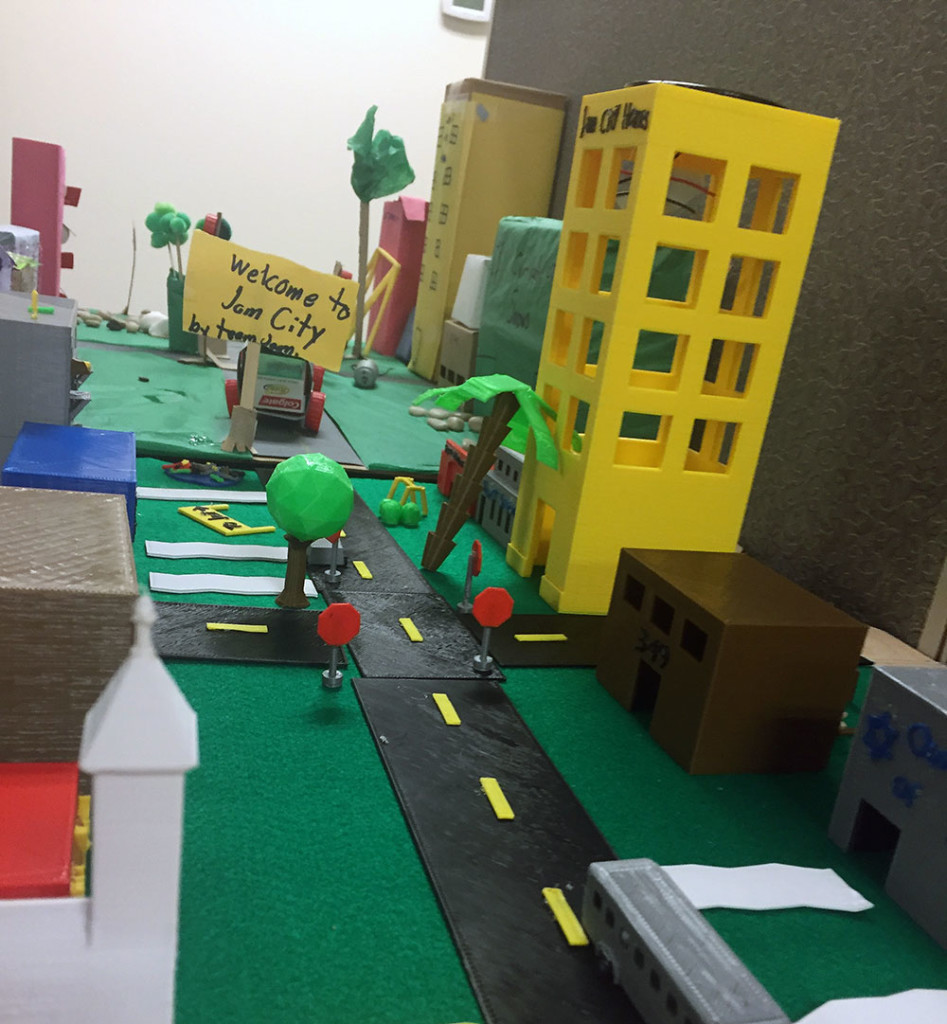As part of our corporate social responsibility program, Gedeon GRC Consulting has been developing several educational programs aimed at schools in our area. We are particularly proud of the Sustainable Cities Challenge which educated a class of 5th grade students on many disciplines that are critical to future success of our cities: Science, Technology, Engineering, Architecture, Mathematics, and Sustainability (STEAMS).
In this program produced in collaboration with ArchForKids, the students of Sacred Heart Elementary School in Cambria Heights (Queens, NY) worked in small groups with our engineers to learn how to design cities in such a way that will benefit the people of today, without compromising the ability of future generation to enjoy a similar lifestyle. Team leaders introduced the kids to sustainable urban planning concepts such as recycling rainwater for domestic use, low emission public transportation and energy, and building upward instead of sprawling on new undeveloped land. The students were challenged to come up with a drawing of a sustainable city. Once their designs were complete, the kids used a combination of recyclable, degradable, and natural materials like cardboard, Popsicle sticks, and rocks to build a 3D model of their city.
Each team had at least one building with an actual functioning solar panel that powered a LED light. There were multiple sustainability concepts incorporated in each model. The kids’ cities included green spaces, public transportation, recycle bins, wind turbines, electric vehicles and rain water catches.
All groups presented their project to the class and then voted on which model they thought was the most sustainable city. They were excited to find out that we would be returning to the school shortly with a 3D printed model of this city to be displayed for the entire school to see.
 When we returned, we brought our Lulzbot Taz 6 3D printer to show the students how a 3D printer works and what it is capable of. Needless to say, they were excited and curious about 3D printing. The students then had the opportunity to build the winning city, which they named Jam City, with the parts we had printed since our last visit. The 3D printer allowed us to reiterate the important concept of scale and proportion. All of the materials were printed using polylactic acid (PLA), a biodegradable plastic derived from plants.
When we returned, we brought our Lulzbot Taz 6 3D printer to show the students how a 3D printer works and what it is capable of. Needless to say, they were excited and curious about 3D printing. The students then had the opportunity to build the winning city, which they named Jam City, with the parts we had printed since our last visit. The 3D printer allowed us to reiterate the important concept of scale and proportion. All of the materials were printed using polylactic acid (PLA), a biodegradable plastic derived from plants.
Sustainability is one of the most prominent issues that the future generations will be faced with. About 50% of the world’s population lives in urban areas, and it’s estimated that by 2050 this percentage could climb to a staggering 65-75%. In many cities, as much as 50% of the buildings that will support future city dwellers are yet to be built. If not handled correctly, this growth could lead to disastrous consequences that we are already beginning to see around the world. Examples of harmful development include cities like Beijing being choked out by a pollution, children becoming ill from unsafe drinking water in Michigan, and waterways filled with garbage and poisonous chemicals in Delhi, just to name a few.
Early education plays an important role not only to avoid detrimental effects but also to allow the new generations to take advantage of the opportunities offered by this developing industry. Getting young students interested in STEAMS programs will encourage them to continue their education through high school and onto college and eventually, hold a career that will allow them to shape a better future.
According to the United States Green Building Council, “By 2018, green construction will directly contribute 1.1 million jobs and $75.6 billion in wages by 2018 in the United States”. They go on to say, “Between 2015 and 2018, LEED-certified buildings in the United States are estimated to have $1.2 billion in energy savings, $149.5 million in water savings, $715.2 million in maintenance savings and $54.2 million in waste savings. The economic, social, environmental benefits of sustainable urban development are clear.
If you or someone you know would be interested in holding this, or a similar program, contact us at STEAMS3000@gedeongrc.com or simply share this article with them.
